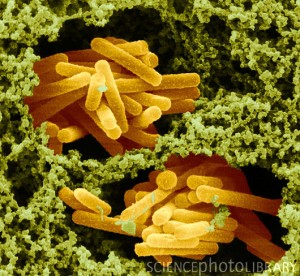 India’s national animal is the Tiger, the national bird is peacock and the national tree is the Banyan tree. Now get ready to add another species to the list with the government planning to give a huge recognition to a tiny little microbe. Soon one among a handful of short listed microorganism will be adopted as the national micro-organism of India and if you like the idea, you can even vote for your favourite microbe.
India’s national animal is the Tiger, the national bird is peacock and the national tree is the Banyan tree. Now get ready to add another species to the list with the government planning to give a huge recognition to a tiny little microbe. Soon one among a handful of short listed microorganism will be adopted as the national micro-organism of India and if you like the idea, you can even vote for your favourite microbe.
In the ever growing list of official symbols of the country, with the elephant recently getting the national heritage animal status and the Ganges Dolphin being recognized as the national aquatic animal, the government is mulling over a mirobe, that can be adopted as another national symbol of India.
The Centre for Environment Education (CEE) and the Ministry of Environment and Forests (MoEF), will decide the name of the microbe very soon and those in contention for the coveted title are,
Lactobacillus:
Used for the production of yogurt, cheese, pickles, beer, wine, cider, cocoa, and other fermented foods.
Rhizobium:
Farmer’s friend, Rhizobia are soil bacteria that fix nitrogen after becoming established inside root nodules of legumes. They are a vital part of the food cycle and of immense importance agriculture.
Wild Yeast:
Types of yeast used for baking, which is essential for food production. The most common type of yeast is S. cerevisiae, which is used in baking as a leavening agent, where it converts the fermentable sugars present in dough into the carbon dioxide.
Blue mold:
This is a major food spoilage organism. Blue mold can cause severe damage to susceptible tobacco plants in many parts of the world. It is a type of parasite that must have living tobacco tissue in order to grow.
Bacteriophages:
Important viruses which attack bacteria and, help in fighting diseases when harmful bacteria are present.The T-4 bacteriophage is a bacteriophage that infects harmful E. coli bacteria.
Spirogyra:
This is a filamentous green algae. It is common to freshwater areas and gives water a green tinge.
E. coli:
A bacteria, some strains can be very harmful to human health and it is associated with food borne diseases. The bacterium is commonly found in the human gut.
Mucor:
Mucor is a common term applied to thousands of different molds. The color is typically white to beige or grey and it is very fast-growing. One of the foods affected by mucor is bread.
The primary objective of this decision according to CCE is to make people aware of the microorganisms and give them better recognition.
Amar Karan, programmer coordinator at CCE said microbes play an important role in the soil micro-ecosystem by helping absorb nutrients for plants and crops. Microbes are also helpful in food-processing, medicines, waste management and contribute to the economy of the country by providing ecosystem services.
“The idea of having a national microbe is to create awareness and educate people about their importance in our lives. Application of chemicals like fertilizers and pesticides during agricultural practices kills microbes present in the soil. These microbes help absorb nitrogen which is a very important nutrient for plant growth,” he said.
Vote for Your Favourite Microbe
The decision will be made through an educational project and an express train which is moving through different schools and colleges throughout India, the multi-coach ‘Science Express-Biodiversity Special’. You can visit the 16-coach train, which is passing through various cities across the country and cast your vote. The train is presently at Mumbai’s CST station.
So far, over two lakh students from Paryavaran Mitra schools across the country have registered their votes and till now Lactobacillus has received the highest number of votes.
“Kartikeya Sarabhai, director of Centre for Environment Education suggested the idea first, which was then submitted to minister of environment and forests Jayanti Natarajan. The minister readily accepted the proposal,” he said.
“India has the tiger as its national animal, banyan as national tree, peacock as national bird, lotus as national flower, elephant as national heritage animal and Gangetic Dolphin as national aquatic animal. So why not have a national microbe?” said Karan.
If you cannot visit the train, you can also cast your vote by sending email to: or cast vote online at National Microbe. The site is fun and gives lots of information on the short listed microbes. Children will especially find the page interesting.
Let’s see which microorganism becomes a nation’s new idol. (Our vote went to Rhizobium)
More Related Stories,
Researchers Find Thousands of Fungi in Singhad Forest
5 October to be Celebrated as Ganga River Dolphin Day
Image of Lactobacillus in yogurt via sciencephoto






One thought on “Have you Voted for India’s National Microbe?”